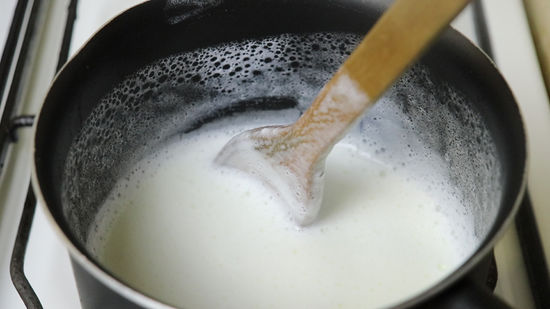Understanding the Purpose and Benefits of Scalding Milk
If you've ever come across a recipe that calls for scalded milk, you might wonder why this step is necessary and what it actually accomplishes. Scalding milk involves heating it to just below the boiling point, typically until small bubbles form around the edges of the pan. While it might seem like an extra step, scalding milk serves several important purposes that can enhance the texture, flavor, and shelf life of your recipes. Let's explore what scalding milk does and why it's worth the effort:
1. Kills Bacteria
One of the primary reasons for scalding milk is to kill any potentially harmful bacteria that may be present. Heating the milk to a high temperature destroys pathogens and reduces the risk of foodborne illness. This is particularly important when using milk in recipes that will not be cooked further, such as custards, puddings, and some baked goods.

what does scalding milk do
2. Alters Protein Structure
Scalding milk causes changes to the protein structure, which can have a noticeable impact on the texture of the final product. Heating the milk denatures the whey proteins, allowing them to interact differently with other ingredients in the recipe. This can result in a smoother, more tender texture in dishes like custards, puddings, and sauces.
3. Enhances Flavor
Scalding milk can also enhance the flavor of certain recipes by concentrating its natural sweetness and removing any raw or grassy undertones. Heating the milk releases volatile compounds that contribute to its aroma and flavor profile, resulting in a richer, more complex taste in dishes like hot cocoa, chai tea, and creamy soups.
4. Improves Emulsification
In recipes that require emulsification, such as certain sauces and custards, scalding milk can help create a more stable emulsion. Heating the milk encourages better blending and dispersion of fat molecules, resulting in a smoother, more cohesive mixture that is less likely to separate or curdle during cooking.

what does scalding milk do
5. Extends Shelf Life
Scalding milk can also help extend its shelf life by deactivating enzymes that can cause spoilage and off-flavors over time. By heating the milk to a high temperature and then rapidly cooling it, you can slow down the growth of spoilage organisms and prolong the freshness of the milk in your recipes.
In summary, scalding milk is a simple yet effective technique that can have a significant impact on the outcome of your recipes. From improving texture and flavor to enhancing food safety and extending shelf life, scalding milk is a valuable skill to have in your culinary repertoire. So the next time you come across a recipe that calls for scalded milk, don't hesitate to give it a try—you'll be pleasantly surprised by the delicious results!